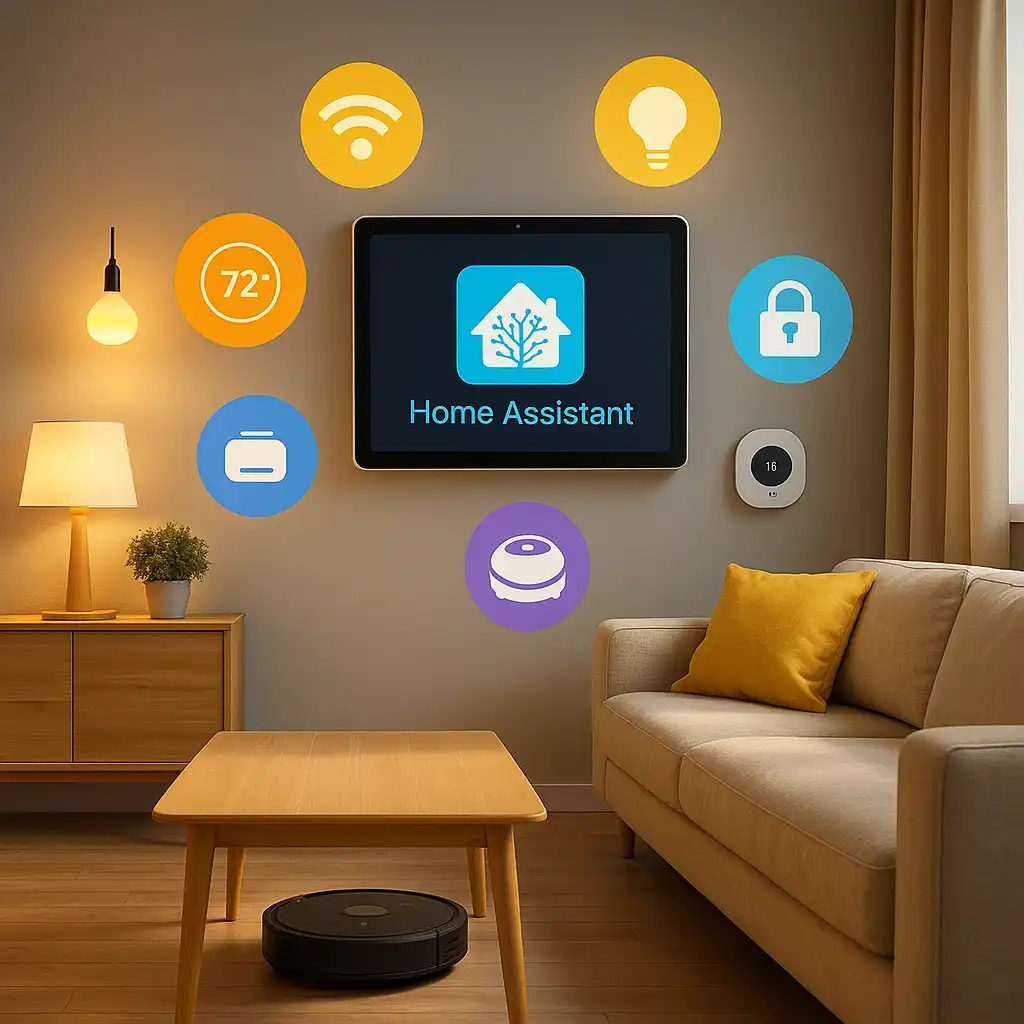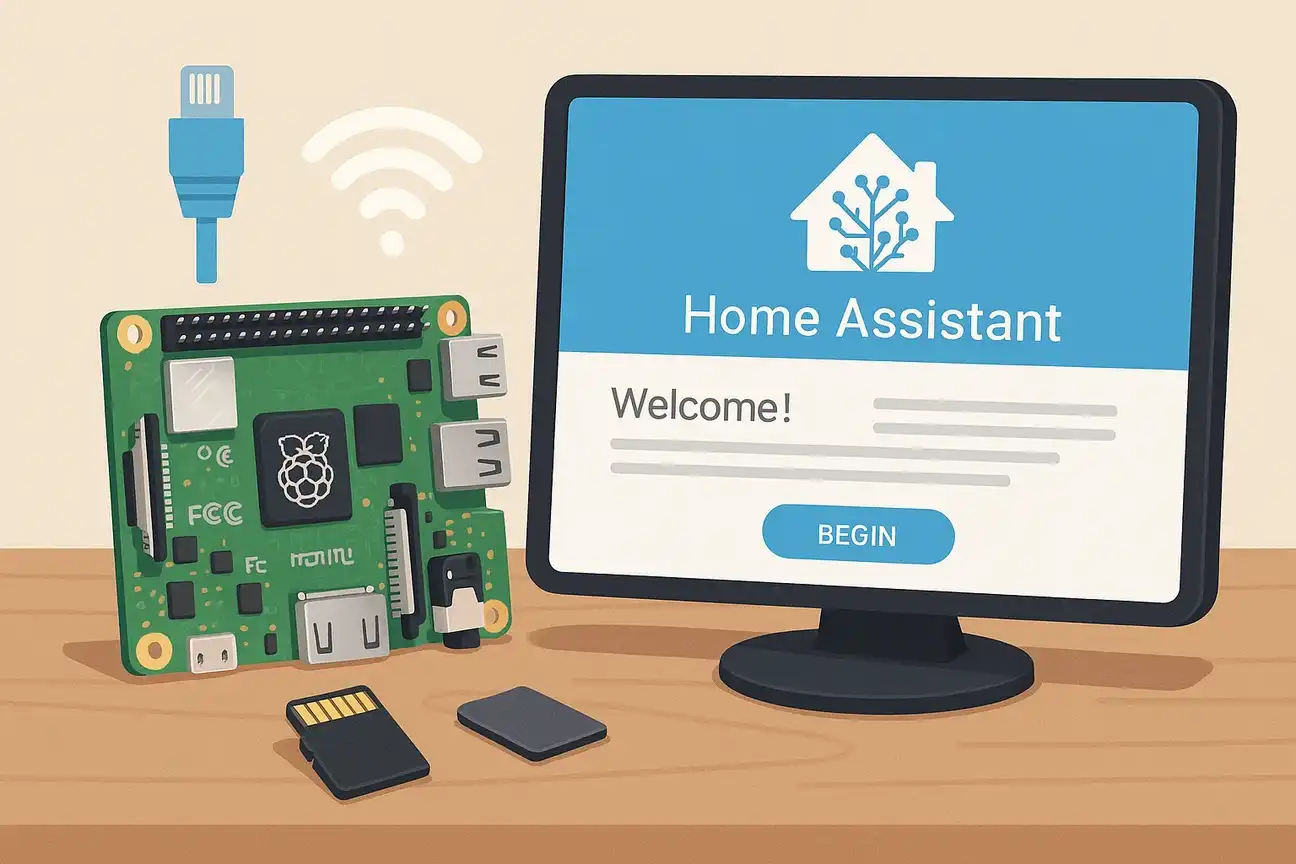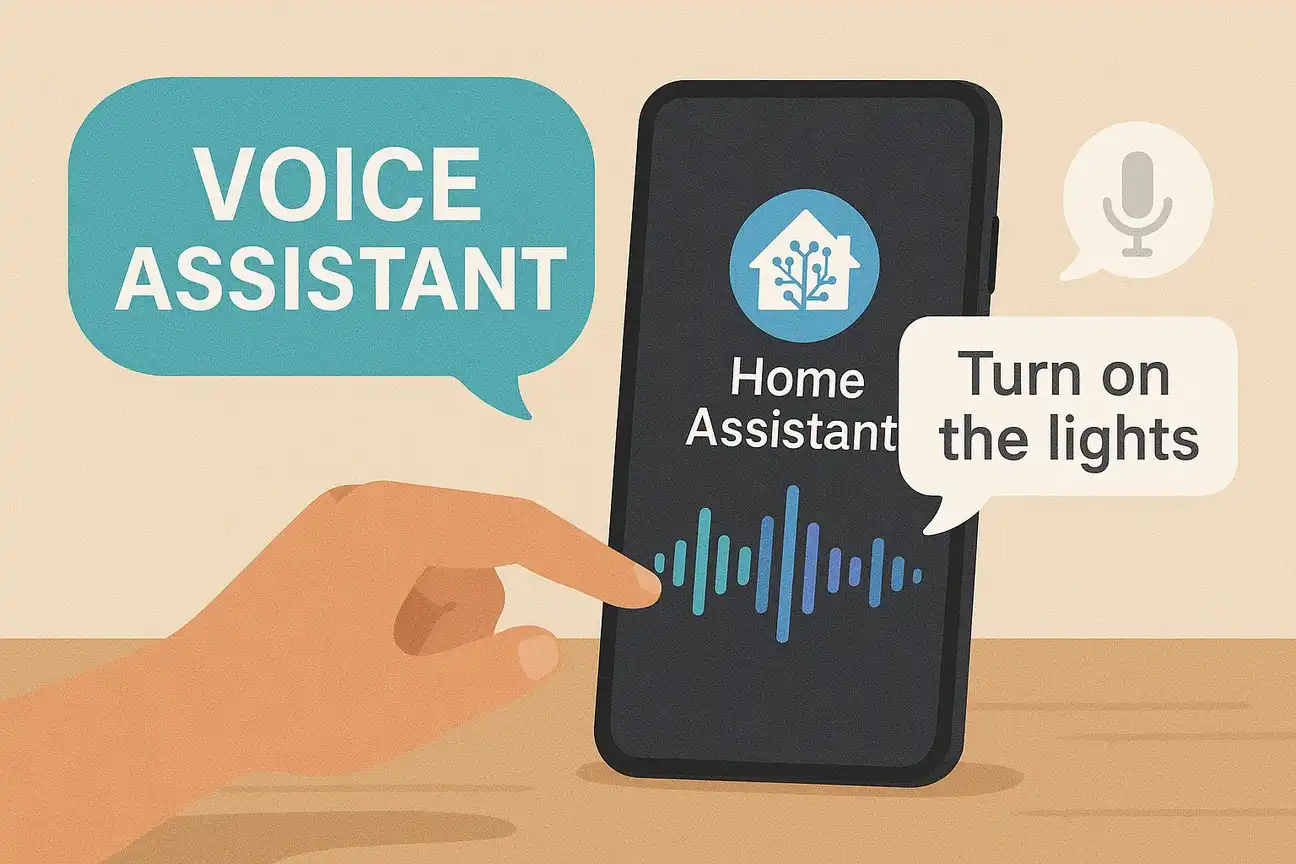Home Assistant makes building a smart home simple and affordable in 2025. This guide shows you how to turn your home into a connected, automated space. We'll cover smart devices, voice control, and AI-powered automation. Whether you're starting fresh or upgrading, you'll find practical steps to follow.
Home Assistant 2025: A Revolution in Smart Home Automation

Home Assistant 2025 brings powerful new features. The biggest addition is AI task integration. This analyzes data from your sensors and cameras automatically.
What can it do?
- Monitor your backyard with a camera
- Get real-time alerts about activity
- Make smart decisions without manual input
- Increase home security and convenience
The platform now includes Ask Question Action. This is revolutionary. Your voice assistant can now ask YOU questions for clarification. It's no longer just reactive. It engages you in conversation to improve your experience.
Installing Home Assistant on Raspberry Pi
The easiest way to get started is to install Home Assistant OS on a Raspberry Pi. Choose between the Raspberry Pi 4 or the newer Pi 5. Both work great.
Here's how:
- Flash the official Home Assistant image to a micro-SD card (or SSD for better reliability)
- Power up the board
- Complete the setup in your web browser
Why Raspberry Pi is perfect:
- Affordable price
- Enough power for typical automations
- Built-in Wi-Fi and Ethernet support
- Minimal electricity usage
- Great for beginners and advanced users

Customizing Your Smart Home Dashboard
Home Assistant lets you customize dashboards to fit your needs. You decide what to display and how to arrange it.
What you can do:
- Add cards for lighting, thermostats, and cameras
- Use badges to show alerts (low battery, water leaks)
- Set conditional visibility to show/hide information based on time or presence
- Display energy consumption alongside security status
Example: Create a dashboard showing lights, thermostat, and energy usage in one place. Everything you need at a glance.

This customization keeps your smart home intuitive and easy to manage.
Seamless Integration with Voice Assistants

Voice control is essential for modern smart homes. Home Assistant works with:
- Amazon Alexa
- Google Assistant
- Home Assistant's native Assist
What you can do:
- Adjust lighting with voice commands
- Change thermostat settings
- Lock doors with a smart lock
- Control any connected device by name
Home Assistant's voice assistant is unique. It doesn't just respond to commands. It can ask YOU questions for clarification. This back-and-forth conversation makes complex automations easier to use.
The integration of voice assistants with Home Assistant creates a more natural, conversational interface for home automation. Unlike traditional smart home hubs that require exact command phrasing, Home Assistant's Assist feature understands context and can engage in dialogue with you. This means you can speak naturally-"It's getting too warm in here" rather than "Set thermostat to 72 degrees"-and the system interprets your intent correctly. The AI-powered voice assistant learns from your interactions and adapts to your speaking patterns over time, making the experience increasingly intuitive. For households with multiple users, this natural language processing capability ensures everyone can interact with their smart home comfortably, regardless of their technical expertise. The local processing of voice commands also means your privacy is protected-audio data stays on your device rather than being transmitted to cloud servers.
Popular Integrations in 2025
Home Assistant supports thousands of devices using multiple protocols:
Matter and Thread (new standards)
- Connect devices from different manufacturers
- Your Ring Video Doorbell, Philips Hue lights, and Aqara sensors work together natively
- No separate hubs needed
ZigBee and Z-Wave (wireless protocols)
- Reliable mesh networking
- Great for motion sensors, door locks, and temperature monitors
- Works without internet
ESPHome (DIY option)
- Build your own smart devices using affordable microcontrollers
- Create custom sensors tailored to your needs
Official manufacturer integrations
- Direct control from Wyze, Ecovacs, Roborock, TP-Link
- Robot vacuums, smart cameras, smart plugs - no cloud required
MQTT (lightweight messaging)
- Local control that works during internet outages
- Perfect for advanced users
Home Assistant is the most versatile smart home platform in 2025 because it supports all these options.
Enhancing Home Security and Energy Efficiency
Security features:
- Smart cameras, video doorbells, and motion sensors integrated into automation routines
- AI processing detects unusual activity and alerts you instantly
- Full control from your app
Energy efficiency:
- Monitor power consumption with tracking tools
- Automate smart plugs, lighting schedules, and climate control
- Run devices only when occupancy detected
- Reduce energy waste while staying comfortable
These features work together to keep your home safe and efficient.
Future-Proof Your Smart Home with AI and Automation
Generative AI in 2025 brings new power to Home Assistant:
- Process natural language queries (understand what you mean)
- Analyze camera feeds for object detection
- Generate automation suggestions automatically
- All processing happens locally (no cloud needed)
Predictive automation learns your patterns:
- Adjust temperature before you ask
- Change lighting schedules seasonally
- Optimize energy use during peak price hours
- Alert you to unusual power consumption (broken appliances)
- Predict irrigation needs based on soil moisture
Home Assistant's machine learning capabilities make your home truly intelligent and autonomous in 2025 and beyond.
Final Tips for Building Your Perfect Smart Home

Start smart:
- Choose key devices: lighting, security cameras, thermostats
- Use dashboards to see and control everything
- Add voice assistants for hands-free control
Optimize over time:
- Monitor energy consumption and reduce waste
- Keep firmware updated for new AI features
- Expand gradually with compatible devices
Home Assistant in 2025 makes your smart home convenient, efficient, and secure. Start with the basics and grow from there.
